The American Pitbull Terrier has a thin single smooth coat ranging from multiple shades including black, merle, buckskin, red, among others. One of the greatest things about the pit bull terrier is that it can have any color combination you can think of.
Despite the usual solid colors named above, this canine can also have spots, genetic colors, and patterns making them even more unique than other breeds. From the A locus to B, D, E, K, S, and more. Multiple genes are playing the role of coat color on your pitbull.
To learn more about the pitbull colors and genetics, below is a detailed look into it. Keep reading to find out more!
Unique and Rare Pitbull Colors
Blue Pitbull
Also known as the bluenose pitbull, they have a blue or grey nose with white markings, also visible in their eyes and toenails. Color variation is there for different litters. The blue pitbull can have either dark or light eyes as well as brindle and fawn colors.
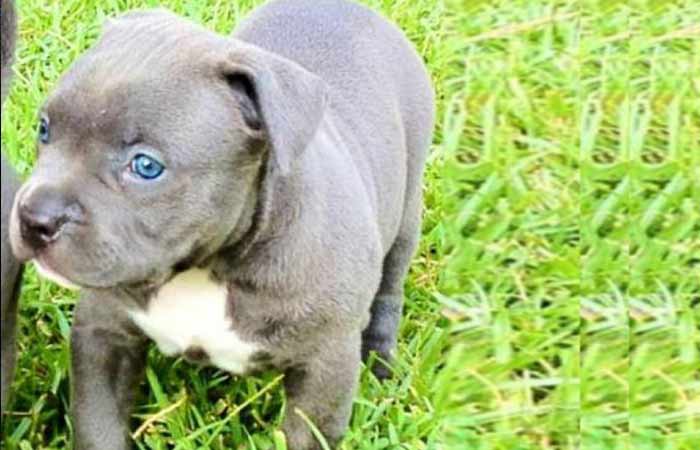
The blue pitbull is very uncommon, especially to see the one with a silver-gray to charcoal coat. The recessive gene present in this color doesn’t allow for the dog to have an actual blue coat and blue nose instead, it gets a dark coat and a slightly blue nose.
Blue Pitbulls weigh about 30 to 60 pounds and can grow to up to 22 inches, maybe less for the females. They have big flat heads with a round skull, muscular cheeks, and no wrinkles. A grey to blue nose with a dark-colored muzzle
Red Pitbull
Also called the red nose pitbull, they come in red, brown, fawn, and brindle colors. The color of the nose is reddish-brown.
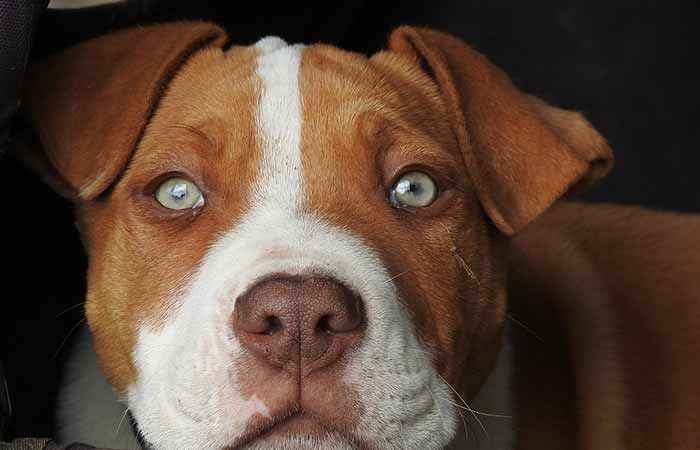
These types of Pitbulls have white accent markings on their heads, probably chest, tail, and feet. Depending on the gene of the dog, they could also have red patterns that appear solid, spotted, or marked.
Masks either white or brown are also popular with this color breed which is why they’re more expensive than bluenose Pitbulls. They have a red nose, red eyes, red toenails, and red lips. It’s probably why their temperament is more vicious. They’re hot-tempered, aggressive, and slightly violent.
White Pitbull
A white pit bull can be called a piebald. It’s very rare as well. Besides their obvious white coat, they could have different color markings to form combination skin. Their eye color also ranges from black, red, brown, or multicolor.
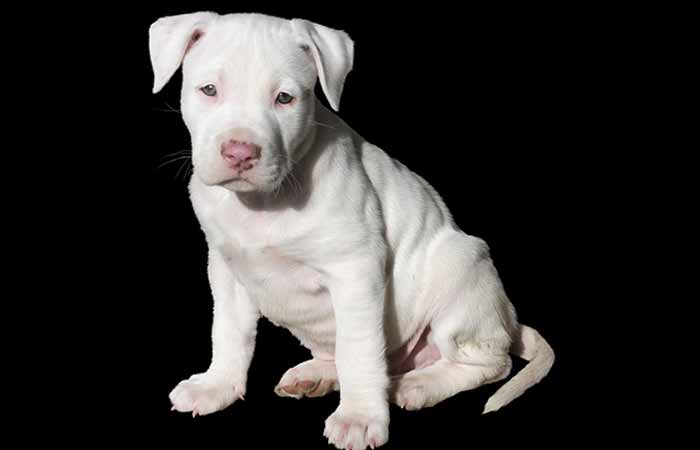
Probably because of its clear coat, you can clearly see its muscular build, glossy coat, and appealing look. Their temperament is also admirable; easy to train, sweet, charming, and one of the latest additions to the companion dog group.
Tricolor Pitbull
The last rarity is the tricolor pitbull that has three colors like that of a Rottweiler. The most interesting thing about this breed is the different variations the tricolor can have from tan, white, black, brown, blue, lilac, red, chocolate, or fawn. As long as there are three colors mixed.
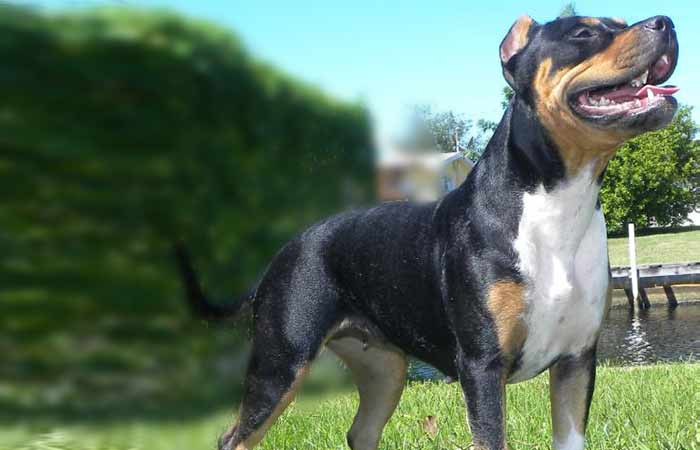
Breeding of the pitbull to produce dogs of this color is still new, which is why it’s unique. Mixing genes to create the three colors coat needs recessive genes and dominant genes to come up with different combinations, but breeders have to be wary of diseases and genetic disorders that may arise during experimentation. This is why the color is not common.
Unlike the merle coats above, the tricolor pitbull is not yet recognized by the American Kennel Club as an official pitbull color.
Because nobody understands how the tricolor mixes the coat colors, your dog may have blotches or patches of color on their paws, legs, chest, face, nose, and tail. Behavior wise, they are very calm and play the family pet really well. However, they are very expensive costing between $2,000 to $20,000.
Common Pitbull Colors
Prevalent pitbull colors are red, buckskin, black, and brindle. Combinations between these shades are also common, especially brindle and white.
Black Pitbull
The American Staffordshire Pitbull Terrier produces pure black pups with a slight variation of white markings. The white specks are very minimal around the chest and the paws. Also as expensive as the tricolor pitbull, they’re very well known to be the most energetic and hardworking.
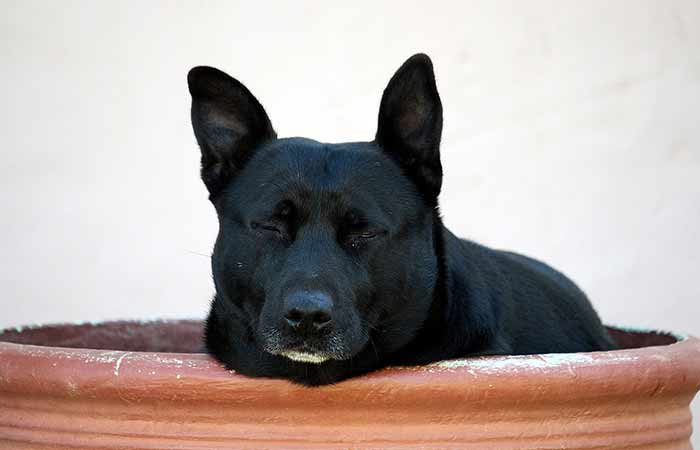
They can be watchdogs, fighting dogs, hunting dogs, cattle driving dogs, or just a companion dog. They have a minimum weight of 60 pounds as my other pitbull and a diverse personality. Black pit bulls are known for their dark silky coat and their dark nose and lips with very little to no spots.
Black and White
This a combination of black and coat. Either of the color can dominate.
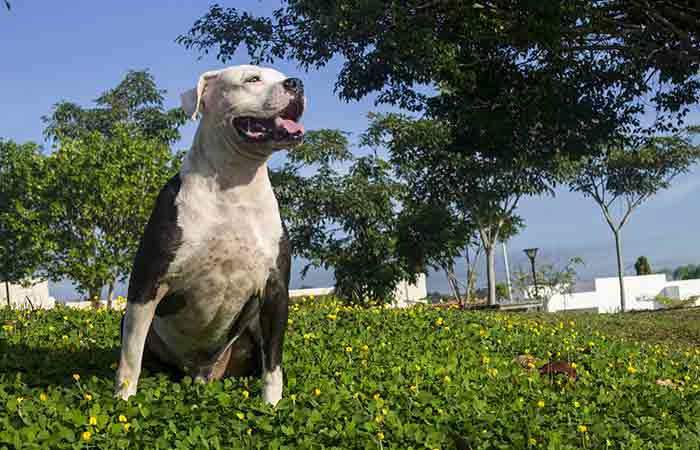
Brindle Pitbull
The pitbull color with a brown base and stripes of black and brown, they are just as popular as the black pitbull.
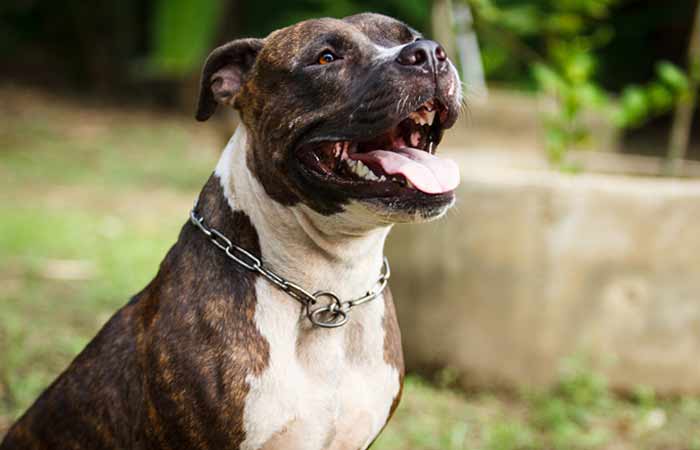
Crossbreeds if the brindle from a fawn and brown pitbull has been there since the 19th century, hence the prevalence of the shade. They’re charming dogs with an equally adorable temperament. Bred as a fighting dog that’s obedient and loyal to their owner.
Pitbull Color Genetics
Multiple genes make up the appearance of a pitbull but only eight loci can contribute to its color.
A (agouti) Locus
The A locus is responsible for the production of different dog patterns from the agouti protein that controls the release of melanin into the hair. Under this locus, there is;
- Ay – dominant red – this gene produces dogs that are fawn, red, and buckskin with a red or yellow undertone.
- Ay/At – incomplete dominance- dogs can appear Sable or Smut. Dogs have darker hair but light tan points.
- At – recessive – a tan point dog that gives a dog multiple colors; Black & Tan, Chocolate & Tan, Blue & Tan, or Lilac & Tan.
E (extension) Locus
The extension locus has four alleles in order of dominance. They include; melanistic mask (Em), grizzle (Eg), black (E), and red (e).
- E – Dominant black hairs – the dog will have black pigmentation including black hairs and probably some red patches.
- Em – Dominant Black hairs with mask – a modifier to the gene where the mask alters the overall coat from dilute to blue. It affects the entire face or a specific spot not past the muzzle. A white mask can delete other dominating genes like brindle.
- e – Recessive Red/Yellow – this gene produces a black pigment like a black or dudley nose with no clear color of the nose. It can also dilute the black pigment on fawn and red dogs.
K (dominant black) Locus
This gene controls the three most common colors, black, fawn, and brindle. It’s a new locus that’s linked to the agouti.
- Kb – Dominant Black – a solid black coat. Red Nose dogs will be chocolate while bluenose will be blue.
- Kbr – Dominant Brindle – brindle shade remains dominant but can have a locus striped pattern over fawn and red coats. Brindle remains the main gene allele inherited from this gene.
- ky – Recessive – a recessive gene from a locus. From black to a tan point.
B (brown) Locus
The locus is linked to the colors brown, chocolate, and liver. There can be two alleles; B (dominant brown) and b (recessive brown).
- B Dominant Black Pigment – this affects the pigmentation around the eyes, nose, lips, and coat. The hairs will be black with other colors exhibiting black patterns on their coats.
- b Recessive Liver pigment – also affects the same areas but fewer effects. The dog would have chocolate stripes and mutations and modifiers.
There can be two recessive genes that dilute dominant black coats to brown and can change the color of the nose and footpads to brown as well.
D (dilute) Locus
The dilute locus as you would guess is responsible for diluting solid colors. For example, a black coat can turn grey or blue, fawn can be pale Sable. The main gene, melanophilin (MLPH) gene causes color dilution in two alleles, dominant and recessive.
- D Dominant Black Pigment
- d Recessive Dilute Pigment – pigmentation around lips, eyes, nose, and skin area can be blue or grey. Hairs of fawns and red nose will also turn blue.
If a dog has both liver and dilute loci, then they become Isabella to mean chocolate dilute). Also termed lilac in the APBT. For red dogs who inherit both, they are known as champagne.
M (merle) Locus
The merle locus dilutes eumelanin/ black pigmentation. They have irregular patches of a diluted solid color. Even though it can dilute any other colors, it can be present on fawn and red pitbull pups.
H (harlequin) Locus
This is present in white pit bulls that inherit black patches creating unique combinations of spots and patterns.
S (spotting) Locus
Last, but not least, is the spotting S locus that forms coat patterns on white, piebald, and parti-color dogs. They produce symmetrical white spots. The S locus produces a homozygous coat that’s also responsible for bright blue eyes and high color deletion.
For each of the loci above they’re independent pigments either eumelanin and pheomelanin that are responsible for the default color on your canine. Eumelanin will be black but can be modified to have different colors such as liver(brown), blue (grey), or isabella (pale brown).
Phaeomelanin will have a red pigmentation hence dogs will be gold or yellow, sometimes pure red, orange, cream, gold, yellow or tan.
The role of these genes is to determine the intensity of the pigmentation. How the coat will appear in general. The markings, spots, and patterns will be dependent on which locus it has. What’s more, the pigment won’t just affect the hair color but the eye color and nose color as well.
Some of these genes can also cause the dog to have freckles, absentee nose color, or blue eyes like an albino merle dog.






